QuestionI have a 55 gallon aquarium with only 6 fish at this time. I just had it set up two weeks ago, but not for the first time. It wasn't set up for a few days before I got it. There are 3 guarami's, 2 catfish and one african knife. A few days ago, I aquaswept it, taking about 5 gallons out to remove food that my daughter over fed them. Now there are white bubbles at the top of the aquarium along the edge. Any ideas what it's from and what can i do to fix it if it's something that can harm the fish. Also, how many fish can be in a 55 gallon aquarium?
AnswerHi Cindi;
Most likely it is from excess waste. Test the water for ammonia and nitrite (not nitrate, it is different). You will probably find that the ammonia is high. Even though the tank has been set up before it still has to go through the break-in period so ammonia and nitrite levels will fluctuate. Remove 25% of the water and replace it with fresh. This will help the fish feel better as well as causing the waste to be diluted and the bubbles to go away. Do this every 3 or 4 days until the ammonia level stays down. Monitor the nitrites because they will go up as the ammonia goes down. This whole process is called "cycling" and can really stress the fish out.
Until the break-in is over in another 4 to 6 weeks, don't add new fish. It will only add to the toxins and it will be harder for all the fish to overcome. Once cycling completes, you can add 2 or 3 fish a week until you reach the desired maximum population. This lets the biological balance adjust to the new population. Too many fish added at a time can cause toxins to rise again, even though break-in is long over with.
Get no more than a total of 50 inches of fish for your tank. This is if you faithfully make a water change of 25% every 2 weeks. Go with less fish if you think it will be longer between water changes. (For instance, if you only feel you can handle a water change once a month, get a maximum of 25 inches of fish for your 55 gallon). Find out the adult size of your new fish when you calculate the population. You need to know how big they will eventually be so you don't accidentally overcrowd your tank. If you make regular water changes of 25% every week, it is possible to have up to 75 or 100 inches of fish in a 55 gallon. This is a very heavy population and can be risky. Just be prepared to do a 25% water change once a week and watch things closely. It's easier to just go for a lower population. ;o)
Here is my article on new tanks to help you through the whole crazy process;
**********
New Tank Syndrome or Break-in Period
So you have a new tank and you filled it up, put the filter together, mounted the heater into place and turned on the lights. You have all the plants and decorations where you want them....
You are ready for fish.
But, your filter is not ready for a full tank of fish yet.
The filter is running and moving the water and cleaning out crud, right? Of course!
But a very important part of your filter is the part you can't see. An aquarium filter removes the larger visible stuff, but it also must remove the dissolved fish waste that turns into ammonia in the water. To do this, special bacteria must grow in the filter system and on the particles of gravel in the bottom of your tank. This process occurs even on a limited scale in little fish bowls that have no filter in them.
This is "New-Tank Syndrome" or the "Break-in Period". The entire process takes 6 to 8 weeks to complete because these "nitrifying" bacteria grow quite slowly.
Start off with only two hardy fish for every ten gallons of water and don't add more until the 6 to 8 weeks has gone by. Hard to be patient, but it is worth it to keep your fish alive and healthy. As a matter of fact, the bacteria cannot develop without fish in the tank. You can let that tank sit forever without fish in it, but as soon as the first fish goes in the process begins. Avoid changing the filter pads during break-in. This removes the bacterial colonies that are essential to a balanced aquarium. You can rinse the filter pad out in a container of aquarium water. This will preserve most of the bacteria colonies while still allowing your filter to flow freely. Even using bacteria additives and water conditioners when you first set up the tank will not make a tank cycle by itself. If there are no fish to provide food (fish waste) for the bacteria, the beneficial bacteria cultures will die and you will have to start the colonies all over again once fish are added to the tank.
Feed your new fish VERY lightly. Any excess food will cause additional waste your system cannot afford to have right now. If you see food floating around or lying on the plants and gravel after five minutes, too much food is going into the tank. Cut back a little each time you feed until it is ALL gone 5 minutes after you feed them.
During this "break-in period" your tank will become cloudy and milky looking. You may have to tolerate this for the entire break-in period but it is only temporary. Changing 25% of the water three times a week until the break-in period is over helps a great deal. Changing water reduces the ammonia and nitrites that rise while the bacteria continues to multiply. If ammonia and/or nitrites become too high, your fish will become stressed and possibly die. Use a good water conditioner when you replace the water and make sure it is the right temperature to avoid shocking your fish.
When the break-in period is over, do regular water changes and vacuum the gravel at the same time. A change of 25% every one to two weeks is a good rule of thumb. It simply needs to be done for healthy fish.
Following these guidelines will help you get your new tank on the right track.
**********
Followups welcome.
At Your Service;
Chris Robbins

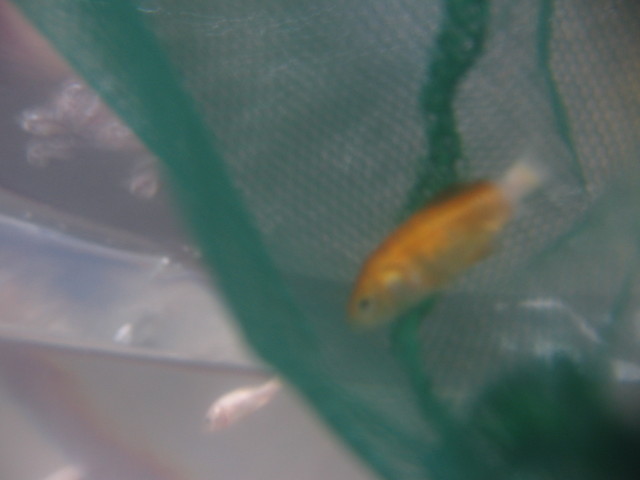 are my fish cannibles?
Question
Bad Tail
My fish are acting very strange. I ha
are my fish cannibles?
Question
Bad Tail
My fish are acting very strange. I ha
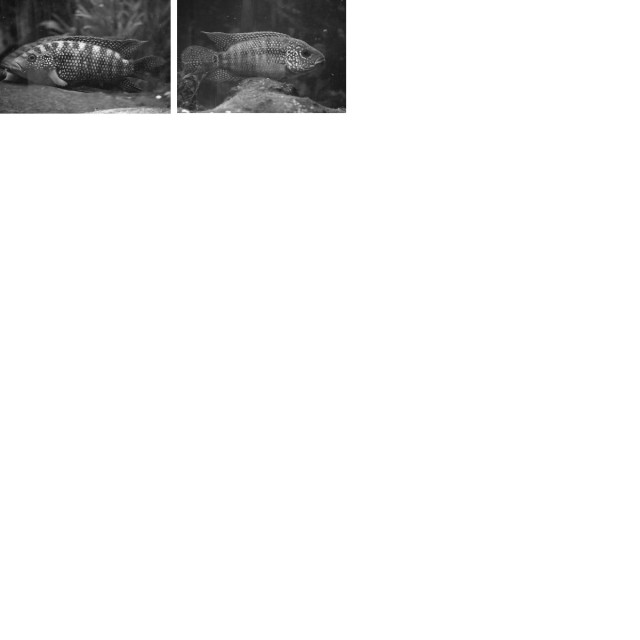 sexing of fish
QuestionQUESTION: i have 3 jack dempsy how can i sex th
sexing of fish
QuestionQUESTION: i have 3 jack dempsy how can i sex th
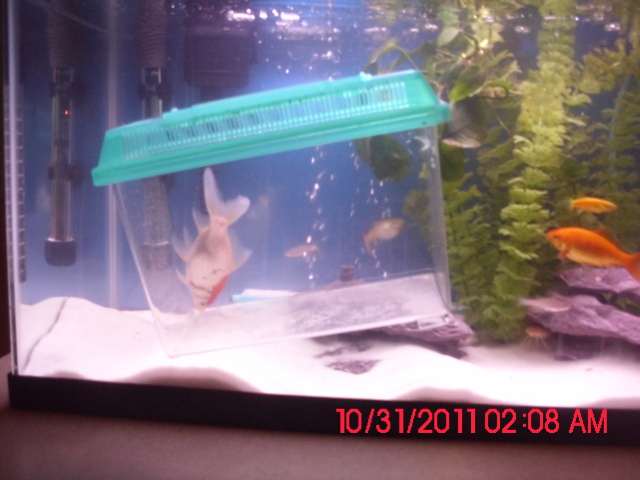 Facedown Gold fish
Question
face down gold fish
On firday i took my
Facedown Gold fish
Question
face down gold fish
On firday i took my
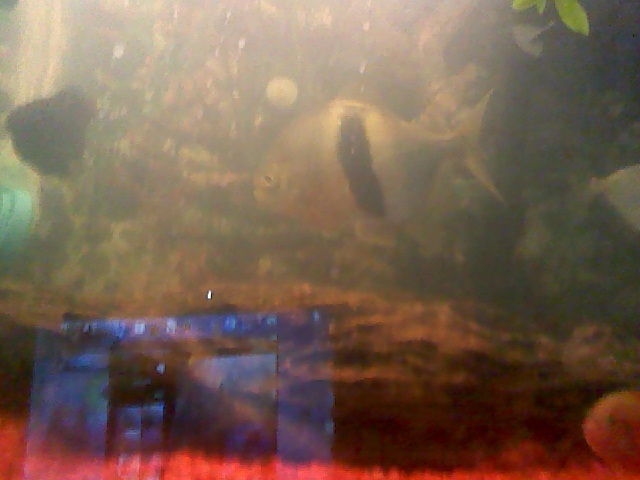 wide bar silver dollar
Questionmy wide bar silver dol
QUESTION: Hello I
wide bar silver dollar
Questionmy wide bar silver dol
QUESTION: Hello I
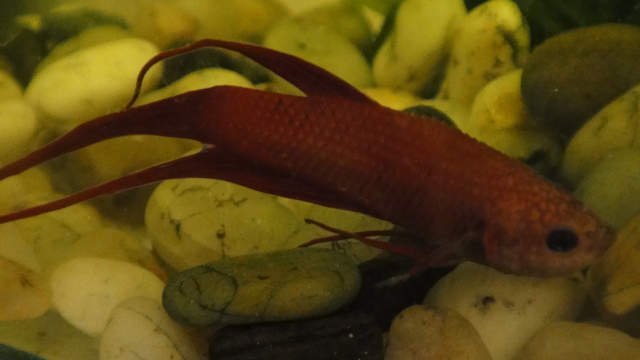 sick fighter
Question
fighting fish
Hi I brought fighter today and m
sick fighter
Question
fighting fish
Hi I brought fighter today and m